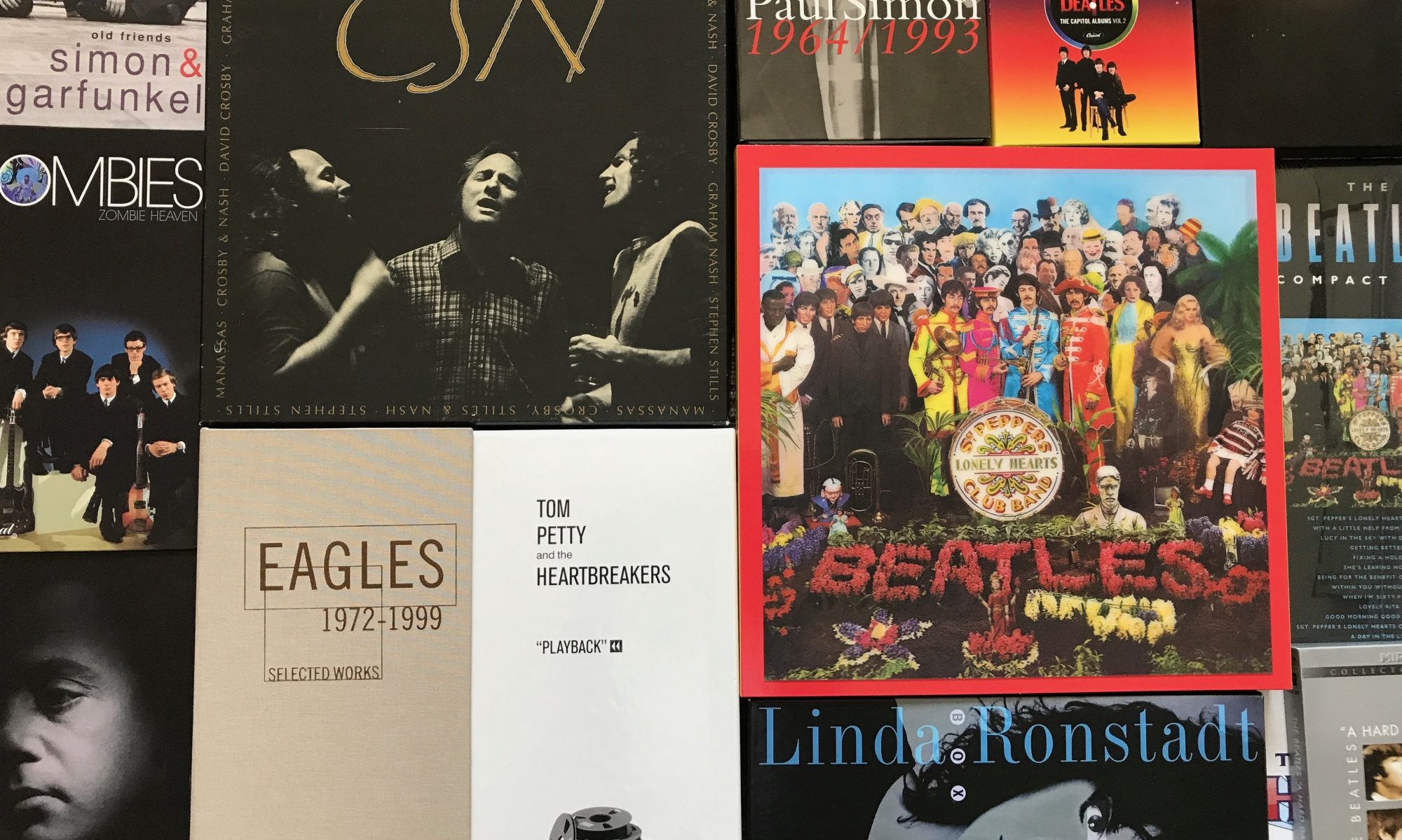There’s never been a lot of film available of Creedence Clearwater Revival. They were popular in the late ‘60s and early ‘70s. That was before music videos were common, and a decade before MTV made artist videos necessary. Although CCR played Woodstock, John Fogerty was not satisfied with their performance, so they were not included in the film. There was also film of a 1970 performance at The Royal Albert Hall in London, but it was lost. Decades later, it’s been found.
If you have Netflix, you can watch a 90-minute documentary called Travelin’ Band/At The Royal Albert Hall. The Travelin’ Band portion of the documentary is a really good history of CCR, with lots of video and photographs, plus narration by Jeff Bridges. It was good to see all of the band members talking on camera during their rise to fame. The film was actually released this past fall, but wasn’t on my radar at that time. Hopefully, it will continue being discovered.
 (Doug Clifford, Tom Fogerty, John Fogerty, and Stu Cook)
(Doug Clifford, Tom Fogerty, John Fogerty, and Stu Cook)
It’s been long known that John Fogerty became estranged from the rest of the band, and the bad feelings were never resolved. So the documentary is a way to see the group during better days.
CCR’s first recording success started with their Creedence Clearwater Revival album in 1968. It was filled with cover songs like “I Put A Spell On You”, and “Susie Q”. That established their “Swamp Rock” style, but it was the next year’s explosion of great songwriting by John Fogerty that made them popular.
In 1969 CCR had three major albums, Bayou Country, Green River, and Willy And The Poor Boys. They included an enviable string of hit singles including “Proud Mary”, “Bad Moon Rising”, “Lodi”, “Green River”, “Down On The Corner”, “Fortunate Son” and more. Rarely has a band produced so many hits so quickly.
The next year, 1970, brought two more albums, Cosmo’s Factory, and Pendulum. Those had the hits “Travelin’ Band”, “Who’ll Stop The Rain”, “Up Around The Bend”, “Lookin’ Out My Back Door”, and “Have You Ever Seen The Rain”. With all their memorable singles, it’s obvious why CCR’s greatest hits album is still a big seller.
After the history of the band, the documentary ends with CCR’s 1970 concert at The Royal Albert Hall. The performance of twelve songs is a combination of hits up to that time, plus some album tracks. The band may not have gotten along later, but here their playing is tight.
 (CCR at The Royal Albert Hall in 1970)
(CCR at The Royal Albert Hall in 1970)
Unlike today’s big concert productions, CCR only takes up about 20-feet of the stage. There are no big screens, no backdrops, and very little interaction with the audience. John Fogerty is the definite focus of the band. He’s the songwriter, the lead guitarist, and the lead singer. The rest of the band is solid, but there’s only one star. CCR broke up in 1972, only four years after having their first hit. John Fogerty went on to a successful solo career.
If you’re a fan, you’ll find the Creedence Clearwater Revival documentary on Netflix well worth your time.








I love this article and would love 2 read more of your articles . It was a great article about a great band